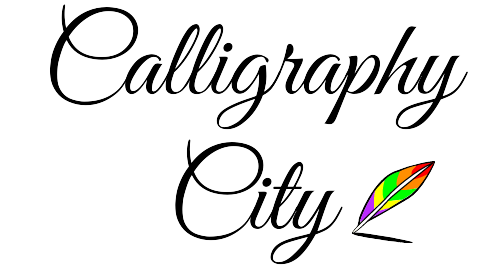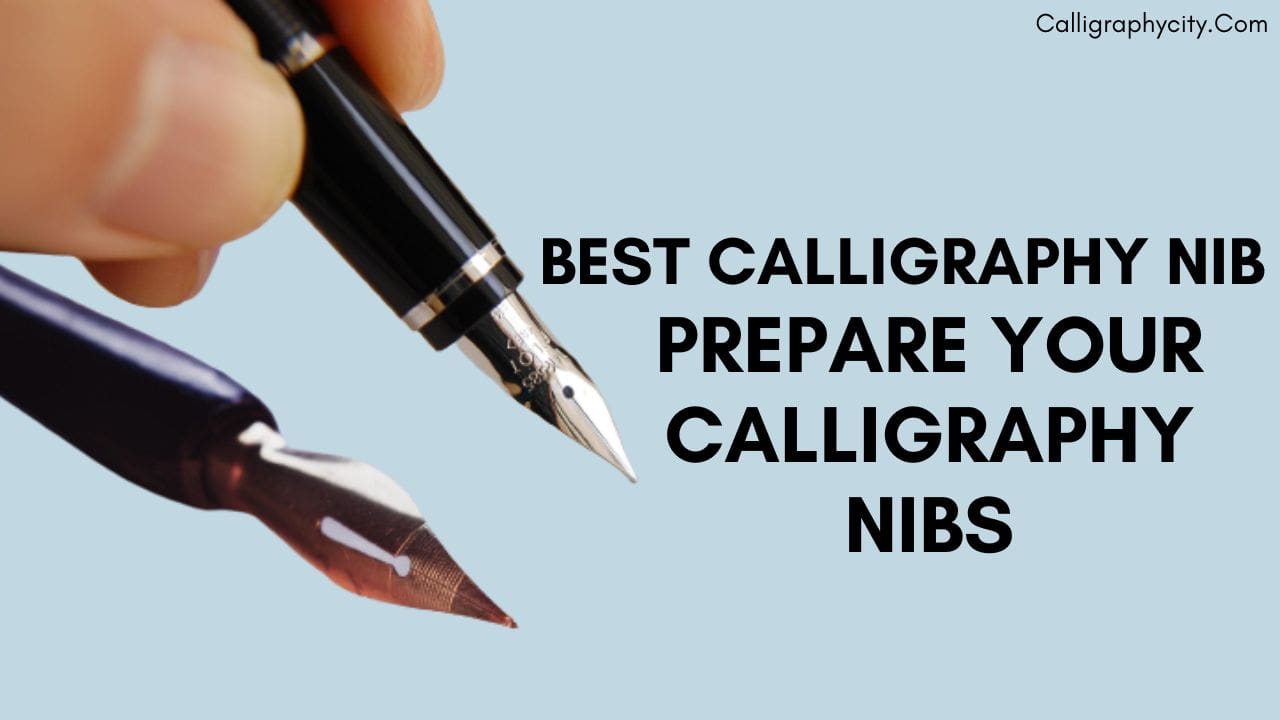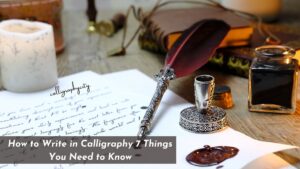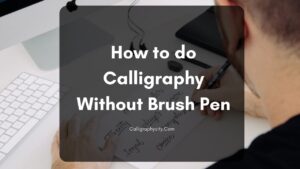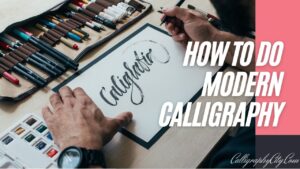(8 Steps) How to Prepare Calligraphy Nibs & 5 Best Nibs for Calligraphy
Before going deep into the topic, let’s first understand what is a calligraphy nibs.
A calligraphy nib is basically a nib used for calligraphy writing.
generally, the line-width differences which are required for creating calligraphy are possible with a fountain pen.
Fountain pens are frequently used for calligraphy, whether by professionals or beginners.
How to Prepare Calligraphy Nibs?

Well, preparing a new nib is a tough job and most people don’t know the proper way to fix the nibs into the holder and they just end up losing the nib.
I am here going to explain to you the proper way to fix your calligraphy nibs.
When you purchase a nib you see there is some oil on the nib to protect the nib from rust or anything while stored in the warehouse.
You can not write with the oil on the nib and removing the oil is a big struggle.
Many people put the pointed nib into the flame, heat the nib until they can see by the time the uppermost part of the nib heating up and then they drop the nib into the hot ink.
This process softens the nib and it will not last long as it should.
So What is the Better Method?
The best method is to use a potato to prepare new calligraphy nibs.
Let’s see How:
-Push your nib half into the potato with gentle pressure and be firm, not aggressive.
-Let the nib sit there for fifteen minutes. Try not to exceed fifteen minutes, or the nib may start to rust.
-Wipe the nib off, and there you go!
Use these steps to prepare the nib always.
Best Nibs for Calligraphy
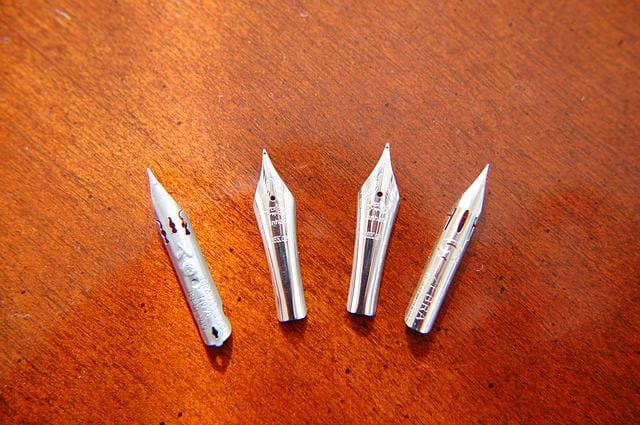
There are various types of nibs available in the market. The struggle of choosing the best nib is really an issue. Here is the list of most used nibs along with their features to solve your problem with nib selection:-
1) Nikko G
It’s really great for beginners. This nib is not too finicky and not too delicate and just a really good nib. Nikko G holds a lot of ink and lasts longer than any other nib.
2) The Brause Steno
The Brause steno is a little more flexible than Neko G. The tip is less sharp and more round which writes thicker. It gives more contrast between strokes than Neko G. The downstrokes are really thick. The best feature of this nib is that it works better on difficult papers because of the rounder nib.
3) The Brause 66EF
EF stands for extra fine in Brause 66EF . It is a very tiny nib and is very flexible so that you can get super fine strokes. One drawback of this nib is that it is a lot more delicate and you have to use it very smoothly and gently.
4) Loenardt Hiro 41
It is fun using this nib because this single nib can create various styles. Many people also call this NAB. Leonard is a bit more flexible and there is no more contrast between downstrokes and upstrokes in this nib. Upstrokes are less fine and clear.
5) HUNT Imperial 101
This nib is a widely available one. Hunt imperial is very flexible with a very fine tip and there is a great contrast between the strokes. I will not suggest it as the best nib so far for begiqnners because the points tend to catch more easily on paper and you have to be more delicate while writing.
What Nib Should I Use for Calligraphy?
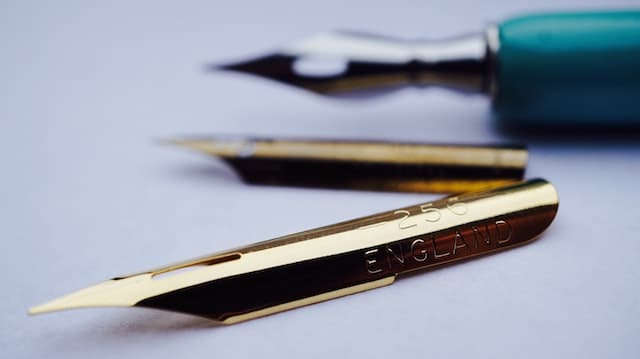
This section is divided into three types overall you will know what type of calligraphy nib is best for you at your level no matter you are Beginner, a Professional, or an Intermediate.
FOR BEGINNERS
Neko G is a highly recommended nib because the ink really holds well to the nib without really having to condition it or prime it frequently. The nib is not too flexible so you can really get used to thin upstrokes without having to control the pen every time you move the holder.
FOR PROFESSIONALS
Brause 511 Medium drawing nib – The strokes that this nib creates are very very fine. You have to go pretty slow to get the right control of nibs. The nib needs good practice and control over the nib holding that’s why it is recommended for professionals only.
FOR INTERMEDIATES
Brause Steno is very much recommended for intermediate calligraphers. Beginners feeling confident enough can also easily use this nib. Using Brause Steno is not too tricky but also not simple as beginner nibs. You will enjoy using this nib. It is also known as Blue Pumpkin.
What are the Different Types of Calligraphy Nibs?
So, far about calligraphy now in this section, We will cover different – different types of calligraphy nibs.
keep calm and keep reading.
Italic nib
The Italic nib is the sharpest nib type available, which makes it sensitive to the writing angle. An italic nib has a broad and flat tip with a straight cut, which provides the maximum amount of line-width variation.
The italic is very broad in particular, and also very flat, resulting in a very sharp edge. These nibs are generally stiff and very scratchy to write with.
They give amazing line variation and are fun to write with, but they do use a lot of ink. They provide very high shading because of their broad and straight surface.
Round nib
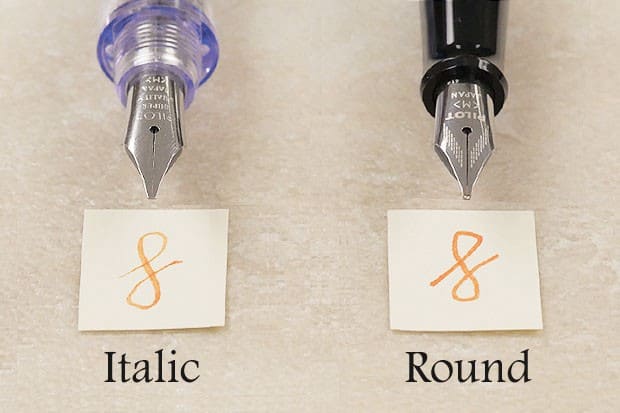
Round nibs, or regular nibs, are the most common nibs these days.
They are easy to write. The round tip shape ensures you can write at nearly all angles.
These are generally very smooth nibs that provide a very consistent line width. You basically get a very wet ballpoint pen.
I do prefer writing with regular nibs over writing with ballpoints, or other pens for that matter.
Stub nib
A stub nib has a flat, broad tip with rounded edges. This results in providing broad downstrokes and thin upstrokes.
Because of the unique rounded edges, you don’t need any special technique. It is very similar to the italic nib but without sharp edges.
Stub nibs are great for people with bold handwriting that enjoy writing something decorative.
They provide line variation, but you write with them as you would normally do.
You won’t be able to cut paper like with an Italic, which makes the nib smoother also.
Flex nib
Flex nibs are soft nibs that provide line variation when we apply pressure.
The nib requires some skill to use because there is a technique to use it, but also a lot of fun to use.
It is basically a calligraphy-style nib. Flex nibs use a lot of ink and need a feed that can go well with them.
Architect nib
An architect nib has a very narrow, but thick nib tip with a straight cut on it.
It provides large line-width variation, with thin downstrokes and broad cross strokes which is quite the opposite of an italic nib.
It is well suited for straight lines but is less well equipped for making curves.
As the name suggests architect nibs are typically used by architects.
They are handy for straight lines and quickly making and shading lines – making them great for architect drawing.
They give a lot of line variation and provide nice shading.
Fude nib
The nib has a long tip at an upward angle. It allows us to create thick lines and large line variations.
This type of nib is generally used for drawing. ‘Fude’ translates to ‘painting’ or ‘drawing’ taken from the Japanese language.
It was designed to imitate the Japanese calligraphy brush.
Conclusion
Now in the end let’s appreciate that you are able to learn so many things today about calligraphy nibs.
By anychance still have any doubt then feel free to comment below I’ll respond as soon as possible.
